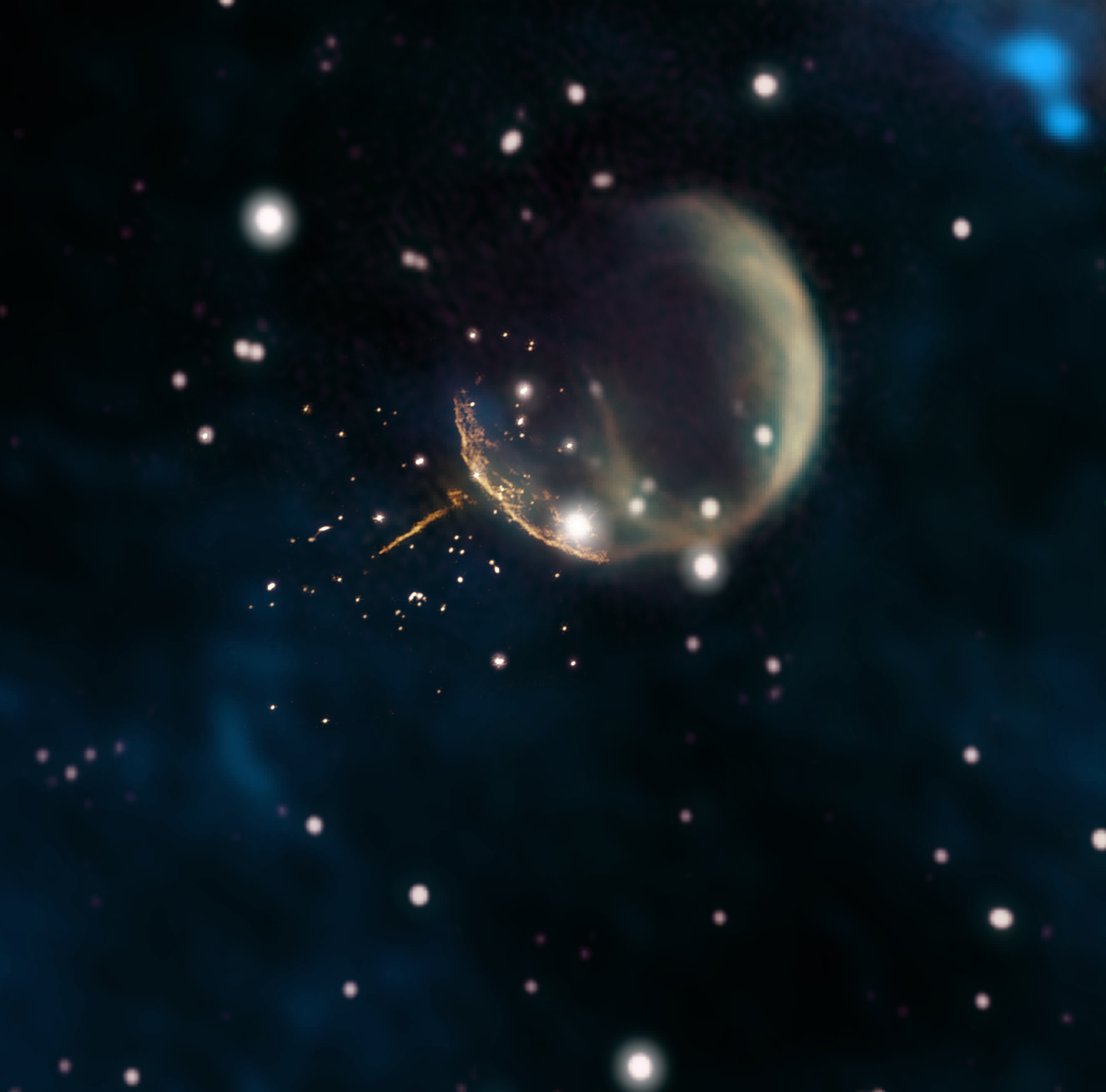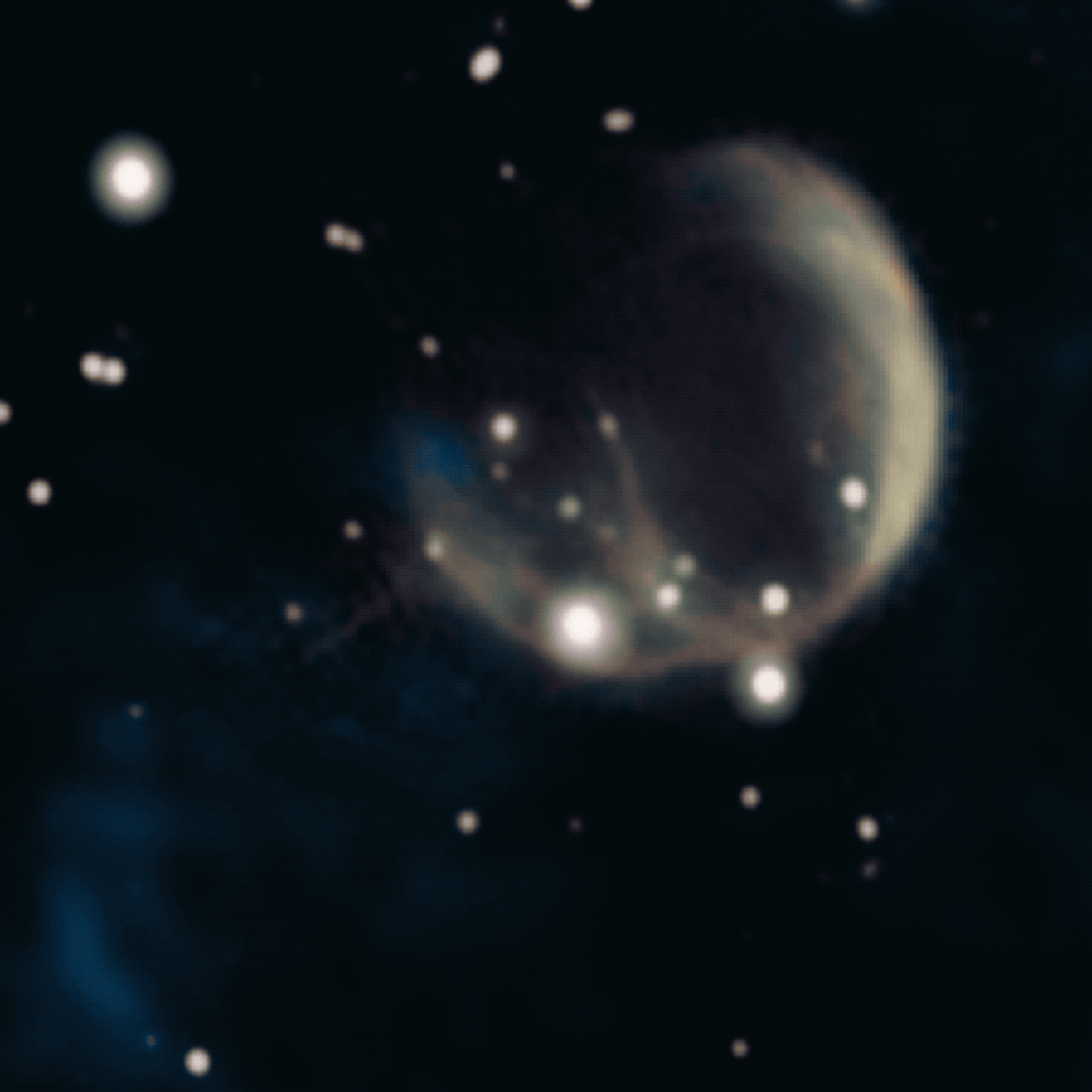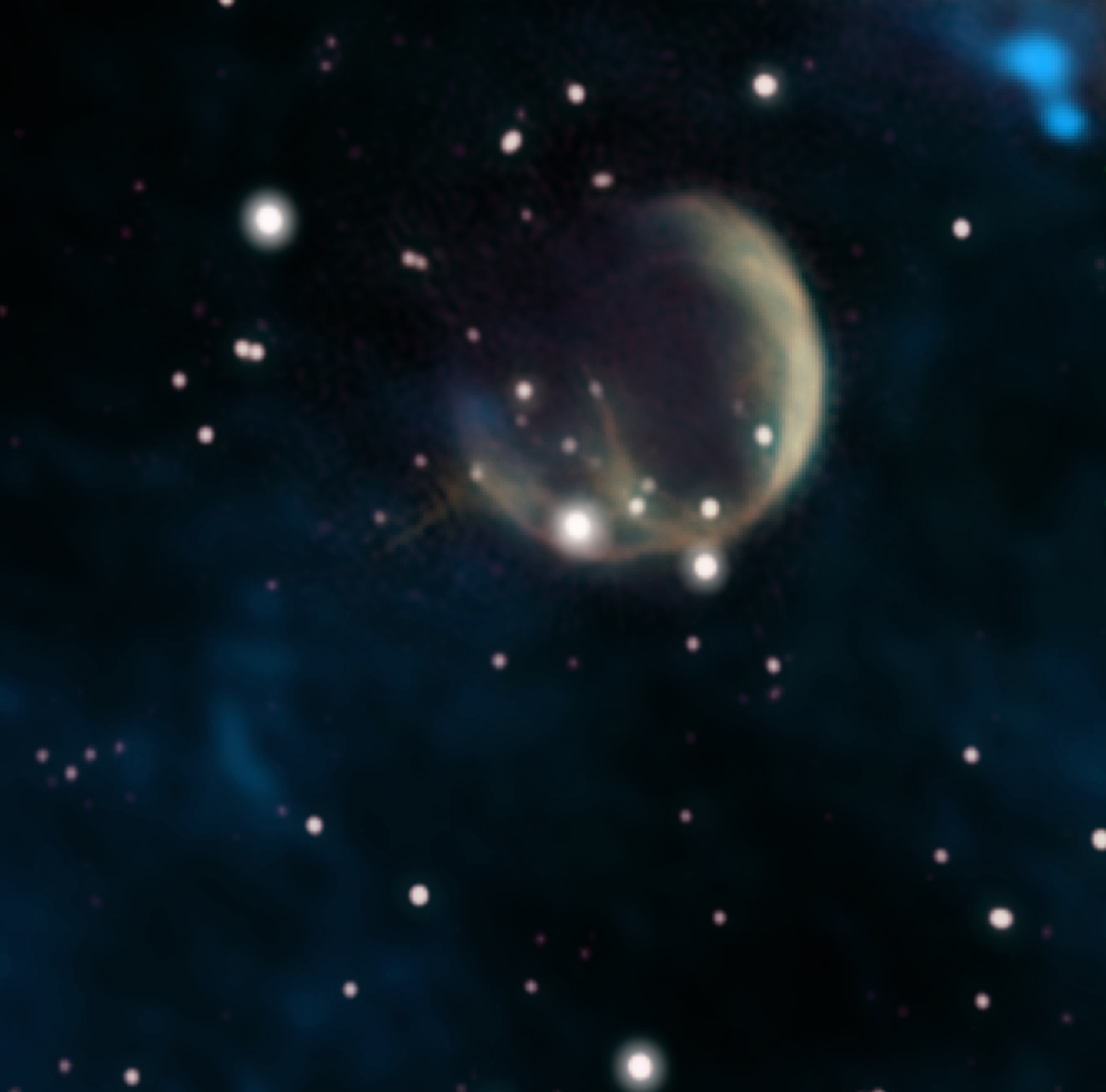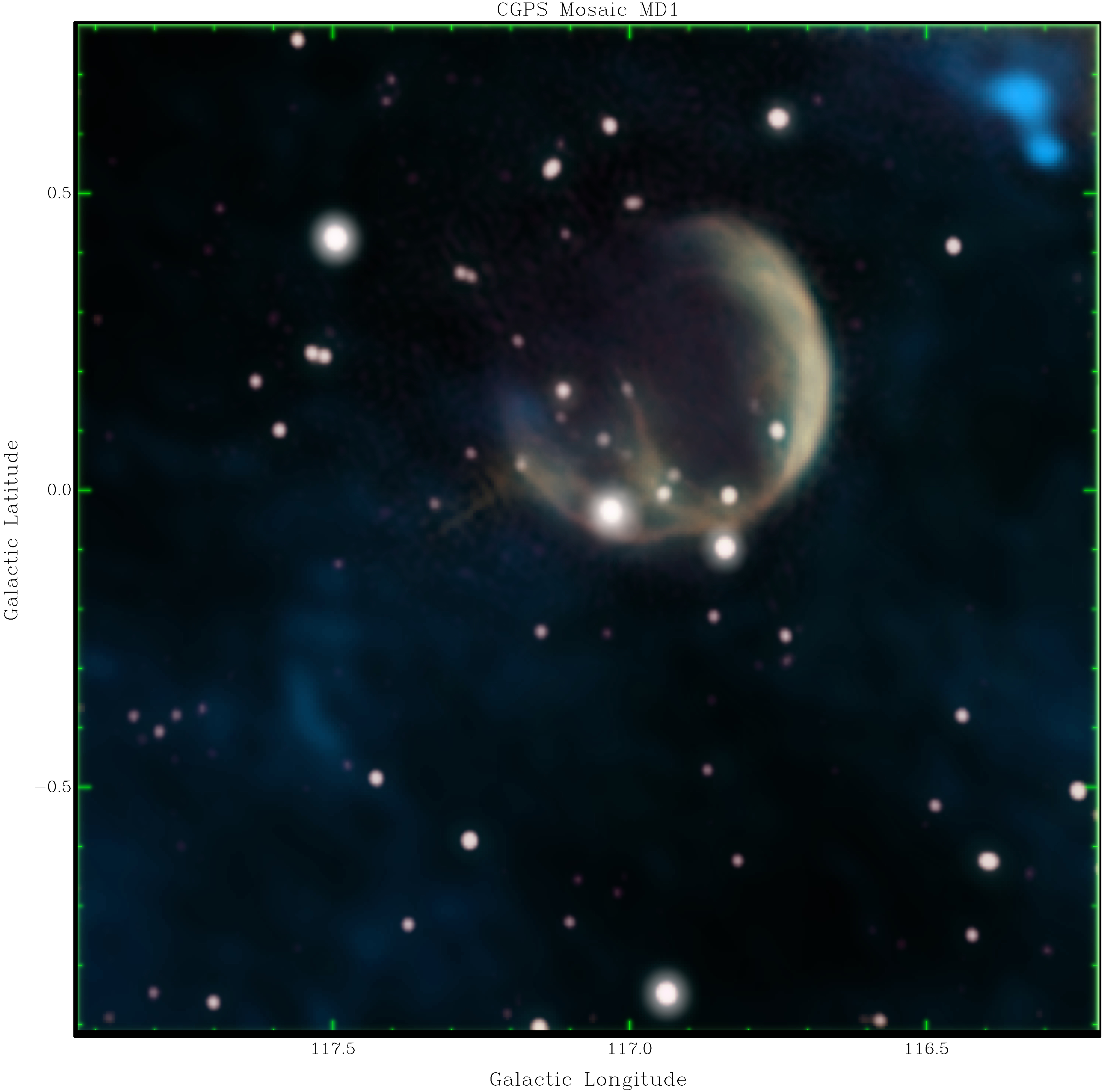Universe
ID: 13156
Astronomers using NASA’s Fermi Gamma-ray Space Telescope and the National Science Foundation's Karl G. Jansky Very Large Array (VLA) have found a pulsar hurtling through space at nearly 2.5 million miles an hour -- so fast it could travel the distance between Earth and the Moon in just 6 minutes.
Pulsars are superdense, rapidly spinning neutron stars left behind when a massive star explodes. This one, dubbed PSR J0002+6216 (J0002 for short), sports a radio-emitting tail pointing directly toward the expanding debris from a recent supernova explosion.
Thanks to its narrow dart-like tail and a fortuitous viewing angle, astronomers can trace this pulsar straight back to its birthplace. Further study of J0002 will help us better understand how these explosions are able to ‘kick’ neutron stars to such high speed.
The pulsar is located about 6,500 light-years away in the constellation Cassiopeia. It was discovered in 2017 by a citizen-science project called Einstein@Home, which uses downtime on the computers of volunteers to process Fermi gamma-ray data and has identified 23 gamma-ray pulsars to date. J0002 spins 8.7 times a second, producing a pulse of gamma rays with each rotation, and has about 1.5 times the mass of the Sun.
The pulsar lies about 53 light-years from the center of a supernova remnant called CTB 1. Its rapid motion through interstellar gas results in shock waves that produce the tail of magnetic energy and accelerated particles detected at radio wavelengths using the VLA. The tail extends 13 light-years and clearly points back to the center of CTB 1.
Using Fermi data and a technique called pulsar timing, the team was able to measure how quickly and in what direction the pulsar was moving across our line of sight thanks to Fermi's 10-year data covering the entire sky.
J0002 is speeding through space five times faster than the average pulsar and faster than 99 percent of those with measured speeds. It will eventually escape our galaxy.






NASA’s Fermi Satellite Clocks a ‘Cannonball’ Pulsar
Pulsars are superdense, rapidly spinning neutron stars left behind when a massive star explodes. This one, dubbed PSR J0002+6216 (J0002 for short), sports a radio-emitting tail pointing directly toward the expanding debris from a recent supernova explosion.
Thanks to its narrow dart-like tail and a fortuitous viewing angle, astronomers can trace this pulsar straight back to its birthplace. Further study of J0002 will help us better understand how these explosions are able to ‘kick’ neutron stars to such high speed.
The pulsar is located about 6,500 light-years away in the constellation Cassiopeia. It was discovered in 2017 by a citizen-science project called Einstein@Home, which uses downtime on the computers of volunteers to process Fermi gamma-ray data and has identified 23 gamma-ray pulsars to date. J0002 spins 8.7 times a second, producing a pulse of gamma rays with each rotation, and has about 1.5 times the mass of the Sun.
The pulsar lies about 53 light-years from the center of a supernova remnant called CTB 1. Its rapid motion through interstellar gas results in shock waves that produce the tail of magnetic energy and accelerated particles detected at radio wavelengths using the VLA. The tail extends 13 light-years and clearly points back to the center of CTB 1.
Using Fermi data and a technique called pulsar timing, the team was able to measure how quickly and in what direction the pulsar was moving across our line of sight thanks to Fermi's 10-year data covering the entire sky.
J0002 is speeding through space five times faster than the average pulsar and faster than 99 percent of those with measured speeds. It will eventually escape our galaxy.






For More Information
NASA: NASA's Fermi Satellite Clocks 'Cannonball' Pulsar Speeding Through Space
NRAO: Astronomers Find "Cannonball Pulsar" Speeding Through Space
Credits
Francis Reddy (University of Maryland College Park): Lead Science Writer
Scott Wiessinger (USRA): Lead Producer
Jeanette Kazmierczak (University of Maryland College Park): Science Writer
Scott Wiessinger (USRA): Lead Producer
Jeanette Kazmierczak (University of Maryland College Park): Science Writer
Please give credit for this item to:
NASA's Goddard Space Flight Center. However, individual items should be credited as indicated above.
NASA's Goddard Space Flight Center. However, individual items should be credited as indicated above.
Short URL to share this page:
https://svs.gsfc.nasa.gov/13156
Mission:
Fermi Gamma-ray Space Telescope
This item is part of these series:
Narrated Movies
Astrophysics Stills
Astrophysics Features
Keywords:
SVS >> Neutron Star
SVS >> Astrophysics
SVS >> Pulsar
SVS >> Space
SVS >> Fermi
SVS >> Supernova
SVS >> Star
SVS >> Radio Telescope
NASA Science >> Universe
SVS >> Gamma Ray
https://svs.gsfc.nasa.gov/13156
Mission:
Fermi Gamma-ray Space Telescope
This item is part of these series:
Narrated Movies
Astrophysics Stills
Astrophysics Features
Keywords:
SVS >> Neutron Star
SVS >> Astrophysics
SVS >> Pulsar
SVS >> Space
SVS >> Fermi
SVS >> Supernova
SVS >> Star
SVS >> Radio Telescope
NASA Science >> Universe
SVS >> Gamma Ray











